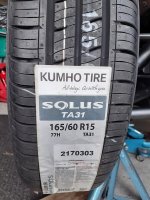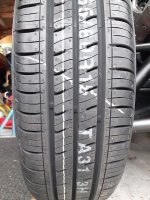I'd tend to agree - in my experience, directional tire treads that've been designed with a specific surface or traction situation in mind generally work best at that task, and it's usually at either of the further ends of the 'surface quality & traction' scale as applicable.... Tractor tires, sand paddles, ice spiked tires & their like, running various directional tread patterns designed to suit each of their specific low traction surfaces at one end; with High Performance 'directional tread' tires designed specifically for the modern smooth Highways, Freeways, & Autobahns etc working brilliantly under most conditions they might meet on those surfaces at the other end.....

hyea: . But just like the tractor tires won't work all that well on those roads designed for high speed travel; the High Performance directional tread tires tend not to work nearly so well on those surfaces where their softer compound tread pattern & siping gets rapidly chewed away by aggressive chip surfaces, or instead may rapidly become filled with the cloying sticky tar goop &/or millions of those little stone chips that get stuck into every gap, just chewing away at it, & not letting go &/or being pumped out or flung out as the tire rotates at the (much??) slower speeds the tires tend to be turning at on those less than ideal roads!! :gaah: . Make sense?? :dontknow:
And yeah, I can see why he's a fan - those 'All Season non-directional' Kumho's that we get on this side of the World do really seem to work & last pretty well on this chip seal stuff regardless of the weather - just so long as you get their pressures reasonably close to 'right' for your riding, loads, etc on the surfaces & in the conditions that you ride on/in! :lecturef_smilie: . Mind you, it's not that there's a great variation in that pressure range, but you'd be surprised how much difference a variation of just 2 psi can make in the overall traction you get or in the life of a tire on these pretty aggressive surfaces!! :shocked: . And of course, there are other 'non-directional' tires that work well too, albeit possibly with slightly different specialities &/or strengths; some of the Michelin offerings, Hankooks, Coopers, & even Dunlop & Bridgestone spring to mind, but there's a lot more that can work & last really well.... just no Kendas that I'm aware of - yet! :sour:


